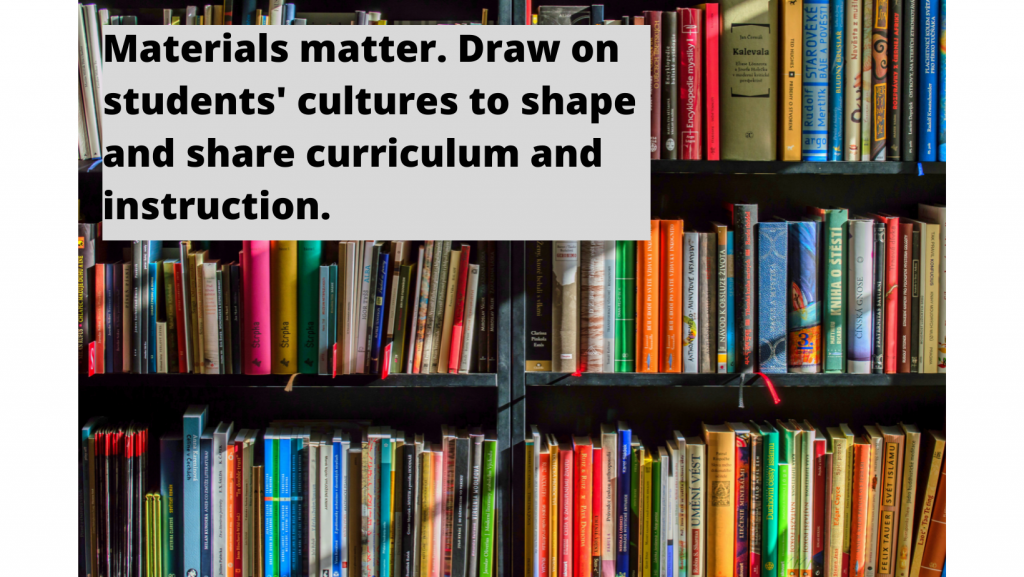5 Materials Matter

Introduction
In the previous module, we learned about the importance of culturally responsive and inclusive teaching, reflected on our own identities and those of our students, and drafted diversity and inclusion statements.
In this second module of the course, we’ll examine our curriculum and materials and look at how using culturally responsive and inclusive materials can impact students. We’ll use a scorecard to assess current curriculum and materials and develop an action plan for updates.
The objectives for this module are:
- Participants will state the importance of culturally responsive curriculum and its impact on student learning outcomes
- Participants will use a scorecard to review and assess current curriculum materials and content for culturally responsive pedagogy
- Participants will use the scorecard data to determine areas of alignment and gaps in culturally responsive pedagogy
- Participants will formulate an action plan for updating their curriculum to be more culturally responsive
Faculty Demographics
In our last module, we looked at student demographics at the university. Now let’s look at the demographics of our faculty and see how they compare to student demographics.
Click the arrows in the slide show below to view the graphics. Click the double-headed arrow in the lower right corner to enlarge the slide show.
Click the play button on the audio interaction below to hear an audio explanation of these graphs. View a transcript of this audio.
At our university, 64.8% of undergraduate students and 50.6% of graduate students are minorities, but only 29.5% of faculty are minorities (USMD, 2021).
Though some faculty at the university already employ many culturally responsive practices in their work with students, the marked difference in the backgrounds of students and faculty underscores the need for culturally responsive and inclusive teaching.
Reflection
Before we examine our own curriculum and materials, take a moment to recall a course you took as a student and to think about what materials were used. Consider a course and respond briefly to the following prompts.
Summary
As you likely observed in your reflection, the materials of a course have a significant impact on students’ experiences. When we use culturally responsive materials, we help create an inclusive background in which students see various voices are valued and feel comfortable taking academic risks.